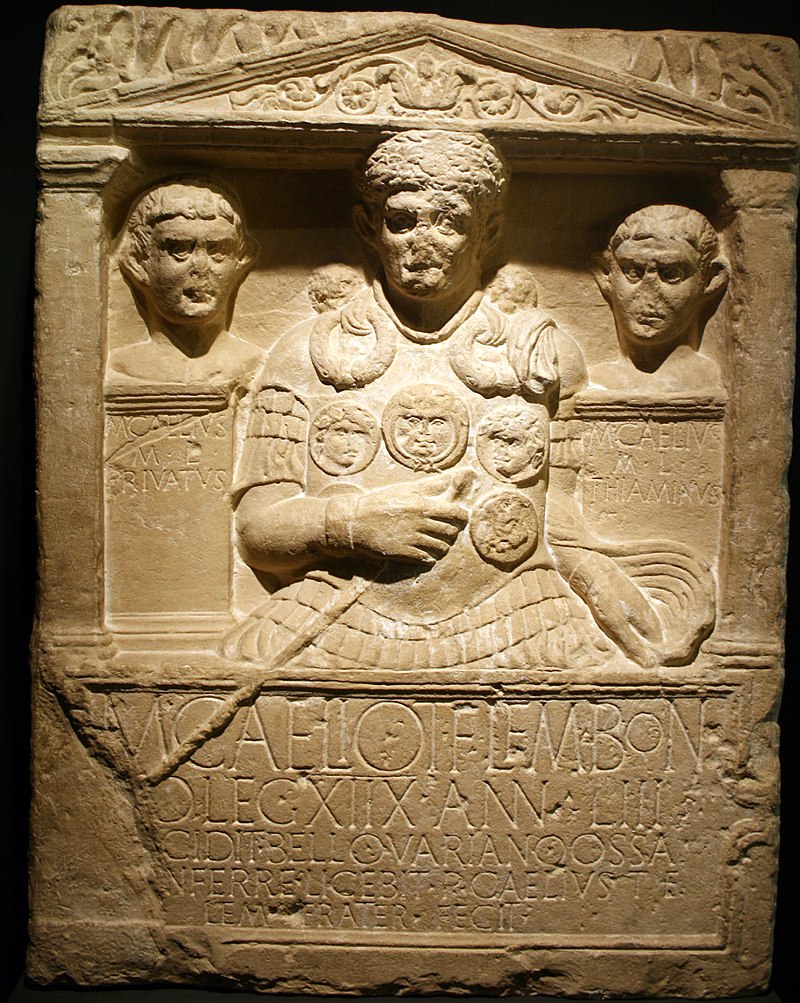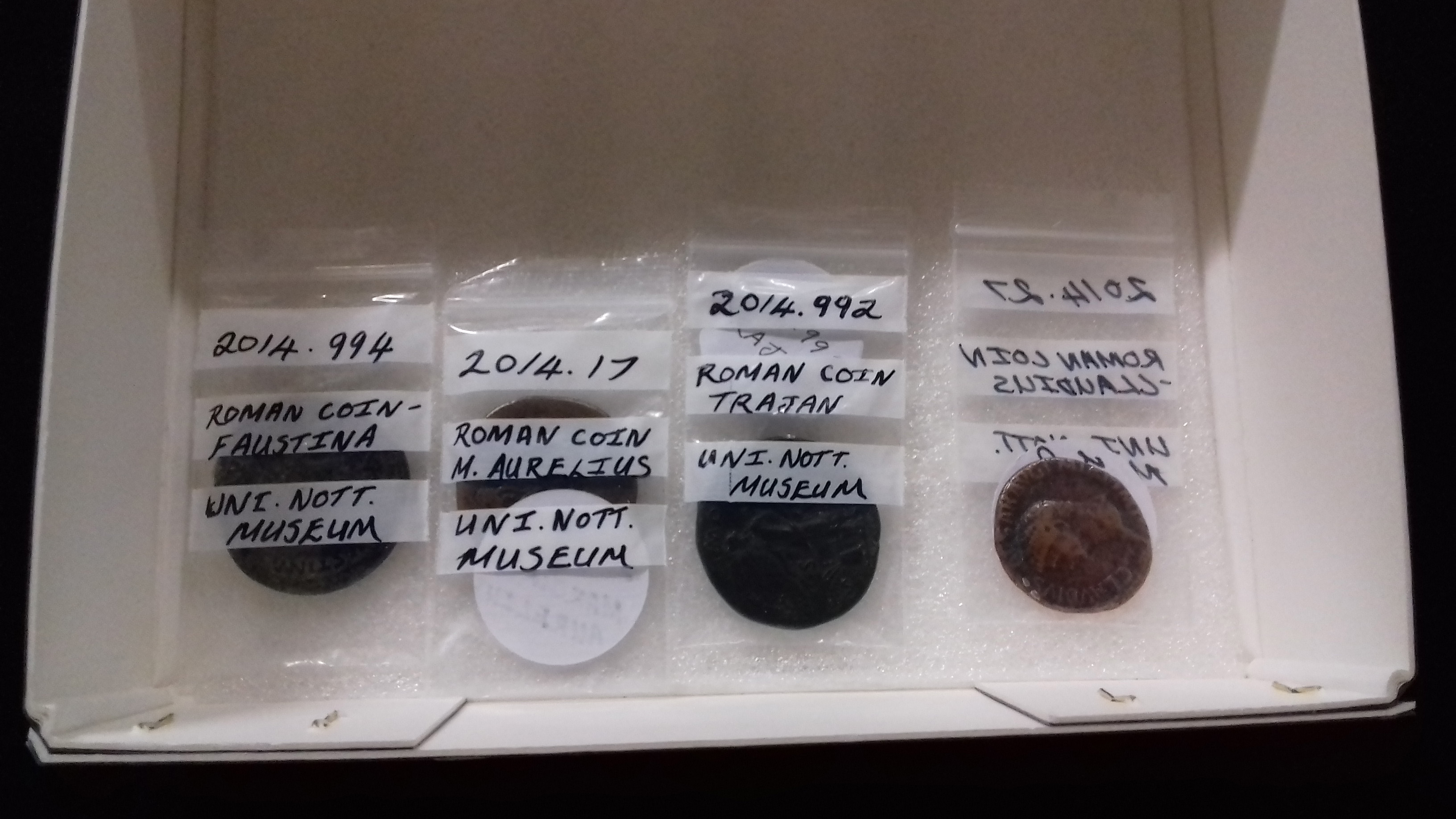From 8th-12th October, the Centre for the Study of Ancient Document in Oxford (HQ of the LatinNow Project) played host to two Year 11 students from the Cherwell School, with us as part of their Work Experience placements. In this guest blog, Charlotte W and Finlay HC dish the dirt on what it’s really like to work in the LatinNow office…
Charlotte writes…
“I didn’t really know what to expect from a week’s work experience at the Centre for the Study of Ancient Documents. As a fifteen-year-old, you hear many terrifying rumours of what life was like before the internet. What I definitely didn’t expect was to be asked to help contribute to LatinNow, a huge EU-funded project investigating the Latinization of the north-western Roman provinces, or to help document original artefacts from Nottingham University Museum for the LatinNow exhibition around Europe, including over 2000 year old coins and pottery sherds!
It was amazing to see these relics from our ancient past up-close and to begin to explore some of the stories they held. Dr Francesca Cotugno was kind enough to explain one of these objects, a replica of the tombstone of a Marcus Caelius, and I was very surprised to learn what a gruesome story it unlocked.
The story goes (and I hope I get this right…) that a German hostage of the Romans named Arminius managed to deceive everyone that he was loyal to the Romans. He gained Varus’s trust, a man highly respected by the Roman senate, then deliberately led him and the 3 Roman legions he commanded into a trap where they were slaughtered mercilessly by Germanic tribes. When the emperor Augustus found out about what happened he was so distraught, as Rome had never suffered a defeat like this ever before, he banged his head the wall shouting “Give me back my legions!”. Arminius was then killed by his own Germanic people as they decided the act he committed went too far and was too ruthless.

This tombstone to Marcus Caelius is unusual as it explicitly says that he died in the Varian war. We don’t know much about his role in the war, but we know from his representation that he was a decorated soldier who must have been relatively wealthy as he is flanked by his freedmen.
I also, in the documenting process, came in contact (with gloves!) with several replicas of iron age coins. In the pictures we took, you can’t see exactly how small the coins were but they were tiny, smaller than a penny. And they were so intricately embossed.
Coinage was introduced to Britain during the Iron age and inscribed coins . Earlier coins mostly just had symbolic animals on them so therefore if there appeared to be writing you could tell it was from a later time. There were also much bigger and chunkier coins from the Roman period, (these were originals so I was constantly holding my breath when getting them out of the bags) which had the name and carving of the Roman Emperors on them. I hope in the pictures you can see how ornate they all are and can get a sense of how incredible it was see things that have been used by our ancient ancestors.
So coming out the other end of this week, I’m relieved to report that Classics is not just some musty dusty academia for elderly scholars, I’ve found it to be entirely different. It’s exciting and very interesting for curious minds, and even though at the beginning of the week I didn’t have a clue what I was going into, I have really enjoyed myself. So thank you LatinNow!
Finlay writes:
“On Monday the 8th of October I arrived at the Centre for the Study of Ancient Documents for work experience. In large part this involved looking at ancient writing equipment for the LatinNow Project. As part of this project to study the Latinization of the North-Western Roman Empire team is using ancient writing equipment as a means of demonstrating how Latin spread throughout Gaul (present day France and Belgium), the Iberian peninsula (present day Spain and Portugal), the Germanias and Britannia (present day Germany and Britain).
For the most part, my work involved summarising the data from British archaeological sites where Roman writing equipment had been found. The hope was to show to what extent Latin had caught on in Britain and compare it the rest of Roman Europe, and so better understand why different local cultures adapted to Roman rule differently. For example, in many of the British archaeological sites ancient Roman styli were found. A stylus, as I found out over the course of the week, was a sharp metal object used to scratch letters on a wooden tablet covered in beeswax. Some of the other artefacts I was looking for were inkwells, seal boxes (used to protect the seals that were used on papers or bags) and wax spatulas (these were used to scrape the wax back into place on a tablet for reuse). As these were methods of writing the Romans used and introduced to Europe, the amount of these objects found in an area could indicate literacy, as well as how common Roman culture was there. The notes and locations took the form of a grand database that I had the opportunity to help fill out.
Working with Charlotte, a fellow student from Cherwell school, we also had the chance to help in curating part of the touring exhibition that is part of the project. We were given a selection of ancient artefacts to measure, weigh and photograph and record in a table. Although we had to wear glove, handling the ancient pottery and coins, with my own hands was an especially interesting and unique experience. The coins in particular were extraordinary as you could see the dents and scratches of a lifetime’s use, without having to look through a glass display case. One coin was from the rule of Marcus Aurelius and you could see the wear and tear from its use throughout his 19 years as Emperor.

The last part of my work on the LatinNow project involved looking at a database of archaeological sites in the Iberian Peninsula under the guidance of Dr Noemi Moncunill, and finding the coordinates of the sites to add to the table. For instance, Torre Alta in Cadiz was one of the sites and the coordinates were 36.52 by -6.149. The end goal of this part of the project was to use the coordinates to create a geomap of Roman writing equipment to visually demonstrate how Latin spread throughout the area. Comparing this to data found in Britain will demonstrate how Latinization uniquely affected native cultures and why people took Latin up – such as status, economic success, citizenship, or literacy.”
The LatinNow and CSAD teams are very grateful to both Charlotte and Finlay for all their hard work during their time with us, and for agreeing to be our guest bloggers this month. Thanks, both!
Later this month, on 26th October, we’re appearing in the Ashmolean Museum’s LiveFriday event ‘Spellbound’. Come and find us in the Reading and Writing Gallery to learn how to put a Roman curse on your enemies. More on this in next month’s blog!